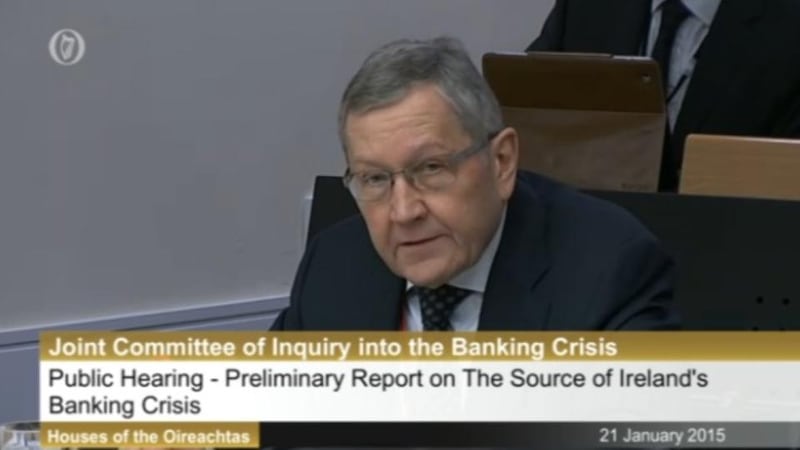Policies implemented by the Irish authorities and banks during the boom years "added fuel to the fire" of the State's economic collapse rather than positioning it for a soft landing, the Oireachtas banking inquiry has heard.
Klaus Regling, who co-wrote a report on the crisis for former minister for finance Brian Lenihan, said the roots of the financial crisis in Ireland began far earlier than in 2007 when the global crisis began to unfold.
“A succession of bubbles in equities, bonds, housing, commodity and credit markets were the key factors behind the global crisis that unfolded from 2007, originating in the United States,” he said.

“The roots of the problems in Ireland began earlier. Following the creation of the single currency, Ireland’s domestic financial services enjoyed a strong and extended boom. This was facilitated by an influx of foreign savings as access to cross-border funding for Irish banks increased strongly.”
He said that before 2008, when the government had to introduce the bank guarantee, counter-cyclical fiscal or macro prudential policies could have moderated the boom and cushioned the recession.
“With a different official policy mix, perhaps a soft landing would have been possible, but instead official policies and banking practice added fuel to the fire,” he said.
The bubble could have been dampened by government policy, and he noted an absence of warnings from the Central Bank on economic risks.
“The true burden of responsibility was quite broad and we concluded with a number of follow-up areas for consideration, such as why was there not a stronger reaction in the banks to this concentrated loan overexposure, how were such governance failures initiated, why was the response of supervisors not more forceful, were there failures of auditors?”
Mr Regling said there was almost a “national obsession” with property, which was supported by the flow of money into the banks and allowed a “blind spot” to develop.
He said it was very striking how many people told personal anecdotes about property investment while he was compiling his report, but he said property was “by no means the sole cause” of the State’s economic collapse.
“On the economic front, relative to the domestic growth and inflation rates, monetary conditions were very easy and in retrospect we can see that this reinforced economic vulnerabilities,” he said, adding that statistical tools also failed to capture underlying fiscal deficits.
Mr Regling said interest rates were lowered as euro area integration got underway, and Irish banks enjoyed unprecedented access to cross-border funds as foreign banks entered the Irish market and intensified competition.
“At the time, cross-border regulatory and supervisory structures had not kept up with this process, though since then many of these points have been addressed through banking union,” he said.
He said when the crisis first struck, the single currency initially protected Ireland from the turmoil it would have faced, but pressures then built.
The report found “a clear lack of budgetary discipline” with pro-cyclical policies and a gradual shift in the tax base that left it fragile and increasingly dependent on the property sector, he said.
Ireland had shifted from stable to cyclical income sources like capital gains tax, corporation tax, stamp duty on property and consumer taxes.
Mr Regling found it “unusual” that Ireland did not have a property tax, but yet mortgage tax deductions were offered, creating subsidies that “distorted commercial real estate development”.
He said there was insufficient boom-time surveillance from EU institutions and the International Monetary Fund, which was not strong or consistent in its criticism of underlying dynamics of fiscal policy.
He said the European Council view of the Irish economy was favourable even if the European Commission, from as early as 2001, was concerned at pro-cyclical policies.
“Across the banking sector there was weak governance and risk management, sometimes disastrously weak. Within the banks internal procedures were overwritten, sometimes systematically, and many banks were highly exposed to individual borrowers and property lending, especially commercial property.”












